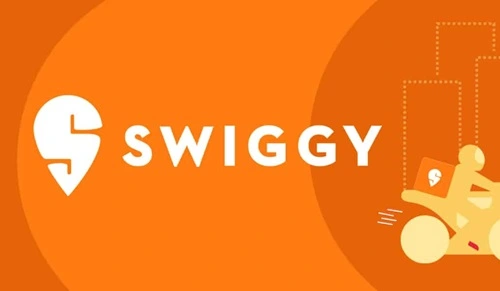Launched in 2014 from Bengaluru, Swiggy has blossomed into India’s pre‑eminent food‑delivery and quick‑commerce powerhouse, serving over 580 cities and nearly 20 million monthly transacting users as of Q4 FY25. With revenue surging more than 44% YoY to ₹4,718 Cr in Q4 FY25, Swiggy continues to ride the wave of consumer demand. But this rocket ride comes with intense competition, regulatory challenges, and persistent losses in its quick‑commerce arm, Instamart. Let’s dissect Swiggy’s position, outlook, and strategic maneuvers using a comprehensive SWOT framework.

Strengths ✅
1. Market leadership & strong brand equity: Swiggy is synonymous with fast, reliable delivery. With its slick app and wide restaurant partnerships, it surpassed competitor Zomato to become India’s largest food‑tech platform.
2. Massive and growing user base: As of March 2025, Swiggy boasts ~19.8 million monthly users—a 34–35% YoY increase—driven by rising multi‑service adoption.
3. Diversified service suite: Beyond food, Swiggy has spread into grocery via Instamart, errands through Genie (now discontinued), and out-of-home consumption. These multiple verticals bolster user stickiness and wallet share.
4. Scalable tech & operations: The app’s intuitive UI, dynamic order-matching, live tracking, and hygiene protocols are all highly optimized. Swiggy also leverages a robust fleet of trained delivery partners.
5. Strong financial capital: Support from investors like SoftBank, Prosus, Invesco, and ICICI ensures Swiggy has ample fuel for expansion and innovation.
Weaknesses ⚠️
1. Persistent losses, especially in Instamart: Swiggy’s consolidated loss ballooned to ₹732 Cr in Q4 FY25, with quick‑commerce alone posting margins of –5.6% and extending heavy cash burn. Food delivery remains its only self‑sustainable unit.
2. High operational costs: Rapid expansion and incentive‑driven growth (especially in Instamart) pushed expenses up ~52% YoY, increasing quarterly losses to ₹1,081 Cr.
3. Margin pressure from deep discounts: To match competitors like Blinkit and Zepto, Swiggy heavily subsidizes delivery and groceries, constraining profitability.
4. Urban market saturation: A significant chunk of current users are concentrated in urban centers, limiting further organic growth.
Opportunities 🌱
1. Quick commerce rebound: Though losses are mounting, this segment is forecast to scale profitably within 1–2 years, with increasing GOV and user frequency pushing it toward break-even.
2. Cross‑selling via multi‑service ecosystem: With 35% of users utilizing multiple services, Swiggy is well‑positioned to increase spend per user, boost retention, and deepen loyalty.
3. Tier‑2/3 market expansion: There’s considerable scope for growth beyond metros, especially with rising internet penetration and buying power in Bharat.
4. New verticals & partnerships: Potential lies in areas like pharmacy delivery, events ticketing (e.g., Scenes), and drones—all supplementing core operations.
5. Tech-driven supply optimization: Advances in AI such as demand forecasting via LSTM can minimize waste and boost efficiency.
Threats ⚡
1. Stiff competition: Zomato (and its Blinkit arm) remains a tough rival, holding ~55–58% market share in food delivery to Swiggy’s ~42–45%.
2. Unprofitable quick commerce mania: The quick-commerce sector is suffering from unsustainable cost dynamics, with both Swiggy and Blinkit yet to turn the corner.
3. Regulatory & supply-side challenges: Adherence to food safety, gig-worker norms, and data privacy laws pose rising compliance burdens . Moreover, friction with restaurants over platform apps (e.g., Snacc, Bistro) may exacerbate tensions.
4. Economic volatility: Economic downturns could curtail discretionary spending on food/grocery delivery .
5. Gig workforce issues: Labor concerns around wages, UI stress, and sustainability of gig work continue to mount and may trigger reputational or regulatory backlash.
Strategic Outlook & Recommendations
1. Strengthen food delivery margins: Maintain optimized delivery zones, intelligent dynamic pricing, and core growth to further lift Adjusted-EBITDA margins (food already showing 2.9%) .
2. Make Instamart profitable: Invest in data‑driven clustering, dark-store utilization, and reduce discount dependency. Focus on operational efficiency to tame cash burn.
3. Expand deeper into Bharat: Develop affordable services tailored to smaller cities, tapping into massive latent demand.
4. Build multi‑vertical synergy: Leverage Swiggy One memberships to cross-promote food, groceries, events, and potential wellness/medicine deliveries.
5. Engage stakeholders wisely: Build transparent partnerships with restaurants and address gig-worker concerns through tech interventions and fair policies.
6. Ace compliance & trust: Invest proactively in food safety certifications, data governance, and gig-worker welfare—creating a defensible moat.
Conclusion
Swiggy’s remarkable journey is rooted in brand excellence, user-first design, tech prowess, and investor backing. Having carved out leadership in food delivery, it now strives for dominance in quick commerce and broader lifestyle logistics. Challenges persist—unprofitability, fierce rivals, compliance pressure—but Swiggy’s diversified business model, visionary expansion strategies, and relentless innovation make it one of India’s most dynamic and promising consumer-tech platforms.

Meet Suhas Harshe, a financial advisor committed to assisting people and businesses in confidently understanding and managing the complexities of the financial world. Suhas has shared his knowledge on various topics like business, investment strategies, optimizing taxes, and promoting financial well-being through articles in InvestmentDose.com


